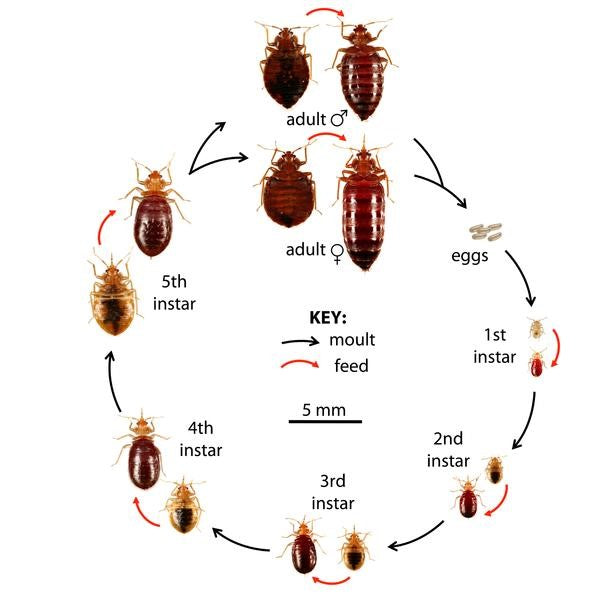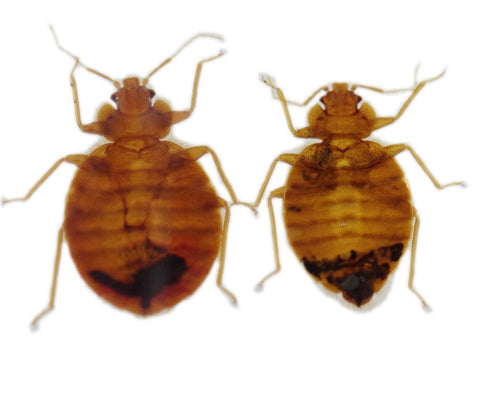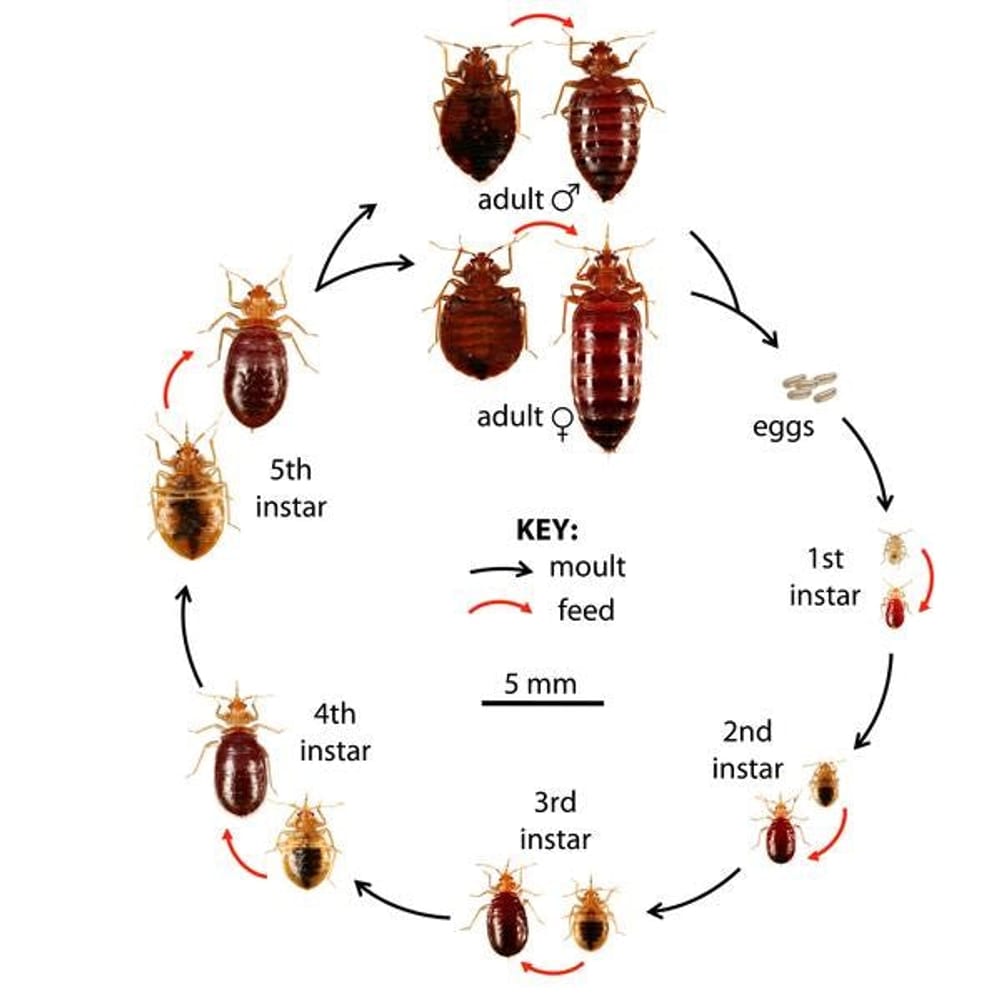This year for Bed Bug Awareness Week Convectex wants to shed light on all of the bed bug FAQs, misconceptions, and treatment mistakes.
So, let’s jump right on with the most commonly asked question; “Is this a bed bug?”
A bed bug issue is often first suspected due to unexplained bites. Unfortunately, bed bugs bites also resemble many other bug bites, so identification only by examining the bites can be difficult. Below you will find a check list of items that you can use to help determine if you have bed bugs. We have also included photo of actual bed bugs so you can compare any insects you find.
Bed Bug Check List:
- Do you have itchy, unexplained bites on your face, arms, hands, legs, neck, or back?
- Are the bites in groups of 3?
- Check your bed, do you see any small dots (resembling ink spots) on the mattress or bedding?
- When inspecting your bed frame, box spring, mattress, and bedding do you see any live bugs hiding in the seams or in cracks and crevices?
- Have you seen blood stains on your mattress or bedding (looks like rusty spots or smears)?
- Do you see any tiny white/clear elongated eggs (looks almost like grains of rice)?
- If you have found any live bugs, are they about the size of an apple seed?
- Have you traveled via plane, bus or other public transportation recently?
- Have you stayed at a hotel/motel recently?
- Check out the images below – do the bugs you see look like the ones pictured?


If you answered yes to any of the questions above then there is a good chance that you could have bed bugs.
The next question we will cover is “Where should I look for bed bugs?”
This question is asked by hospitality managers, pest professionals, and home owners on a regular basis. Many people think that bed bugs only live in beds, but this is completely untrue. Bed bugs can be found in nearly any part of the room. When searching for bed bugs be sure to look in the following places:
- In mattress and box springs – carefully inspect the seams and creases
- Headboards and bed frames – look under, in cracks and crevasses, and behind
- Under carpets, or by the carpet edges and near the baseboards and moldings
- Inside and behind electrical outlet covers
- Behind loose wallpaper and wall decorations
- In upholstered furniture (check seams and edges)
- Inside and under piles of clutter, including piles of clothes, books or stacked papers, in laundry baskets.
Next, let’s cover one of the biggest misconceptions about bed bugs; “Only dirty, untidy people can get a bed bug infestation.” This statement is completely not true. Bed bugs are opportunistic and excellent hitchhikers. They primarily spread by being passed from one person’s belongings to another. They are most commonly picked up in areas with high traffic, such as public transportation and hotels/motels. Even the cleanest, 5 star hotels can have a bed bugs problem…and bed bugs can hitch a ride home with the tidiest, most wealthy travelers. The difference between the size of the infestation depends on how you react to the problem.
Proactive hotels/motels will have a bed bug system in place to inspect and treat for bed bugs regularly and immediately if any evidence is found. Likewise, the home owners with fast and effective treatments will get rid of the bugs before the issue becomes out of hand. Heat treatments are the most effective way to kill bed bugs and should be used immediately as bed bug are detected. Convectex offers bed bug heat equipment for homeowners, pest professionals, apartment managers, and hotel/motel owners.
Another question that we, here at Convectex, get often is; “Why don’t chemical treatments work like they used to?”
If you had a bed bug problem in the past 10-15 years you may notice that the bugs are harder to kill now-a-days then they were a decade ago. This is due to the bed bugs newly evolved resistances to common pesticides. Bed bugs were, at one time, almost extinct in this country, however they adapted and controlled substances laws changed and now we have “super” bugs that are more and more resistant to our treatment efforts. This is one of the main reasons that Convectex has developed our revolutionary heat equipment that kills the bed bugs with clean, dry, hot air. Bed bugs cannot escape the quickly rising temperatures and will perish within 15 minutes of being exposed to lethal temperatures. This treatment method also kills the bugs that couldn’t be treated with pesticides, such as the bugs hiding inside furniture and the unhatched eggs.
Finally, let’s cover one of the most searched bed bug search results on google; “DIY bed bug treatment”
Most DIY methods for bed bugs simply do not work. Many treatments require bed bugs to repeatedly walk through the treatment substance (diatomaceous earth and over the counter pesticides), or they only treat certain areas (such as mattress encasement or pouring boiling water where you know bed bugs are living). Another common DIY mistake is simply busing ineffective products. Did you know that pesticides don’t necessarily have to be tested on bed bugs before distribution? Products are often bundled as “kill all” products. While these pesticides may kill bed bugs if they are directly exposed to the wet chemical they are extremely ineffective at killing an entire bed bug infestation.
Still have questions? Check out our other blog posts at https://convectex.com/blogs/blog or give us a call at 877-375-0005. Convectex can help you get rid of bed bugs with our safe and easy heat solution.

